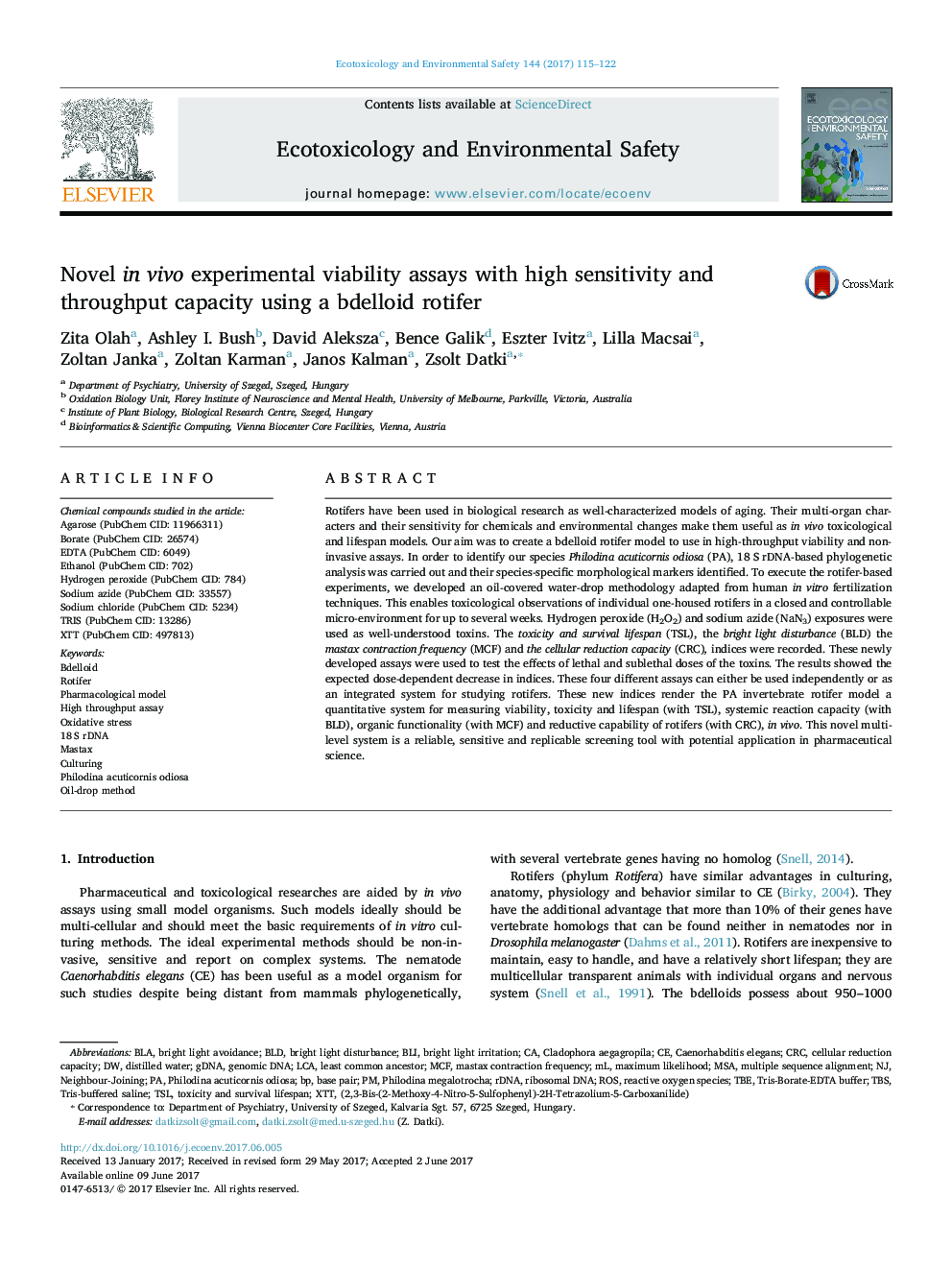| کد مقاله | کد نشریه | سال انتشار | مقاله انگلیسی | نسخه تمام متن |
|---|---|---|---|---|
| 5747473 | 1618920 | 2017 | 8 صفحه PDF | دانلود رایگان |

- Oil-covered water-drop methods for toxicological assays of one-housed rotifers.
- Philodina acuticornis are quantifiably responsive to peroxide and azide challenge.
- Lifespan and three indices of health status were optimized.
- This is an integrated system for quantitating lifespan with dimensions of viability.
- A standardized system for broad use in toxicological and pharmacological studies.
Rotifers have been used in biological research as well-characterized models of aging. Their multi-organ characters and their sensitivity for chemicals and environmental changes make them useful as in vivo toxicological and lifespan models. Our aim was to create a bdelloid rotifer model to use in high-throughput viability and non-invasive assays. In order to identify our species Philodina acuticornis odiosa (PA), 18Â S rDNA-based phylogenetic analysis was carried out and their species-specific morphological markers identified. To execute the rotifer-based experiments, we developed an oil-covered water-drop methodology adapted from human in vitro fertilization techniques. This enables toxicological observations of individual one-housed rotifers in a closed and controllable micro-environment for up to several weeks. Hydrogen peroxide (H2O2) and sodium azide (NaN3) exposures were used as well-understood toxins. The toxicity and survival lifespan (TSL), the bright light disturbance (BLD) the mastax contraction frequency (MCF) and the cellular reduction capacity (CRC), indices were recorded. These newly developed assays were used to test the effects of lethal and sublethal doses of the toxins. The results showed the expected dose-dependent decrease in indices. These four different assays can either be used independently or as an integrated system for studying rotifers. These new indices render the PA invertebrate rotifer model a quantitative system for measuring viability, toxicity and lifespan (with TSL), systemic reaction capacity (with BLD), organic functionality (with MCF) and reductive capability of rotifers (with CRC), in vivo. This novel multi-level system is a reliable, sensitive and replicable screening tool with potential application in pharmaceutical science.
189
Journal: Ecotoxicology and Environmental Safety - Volume 144, October 2017, Pages 115-122